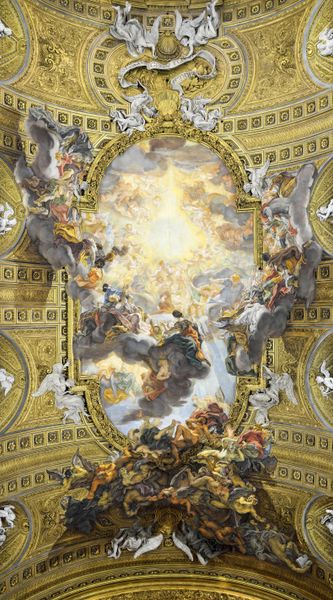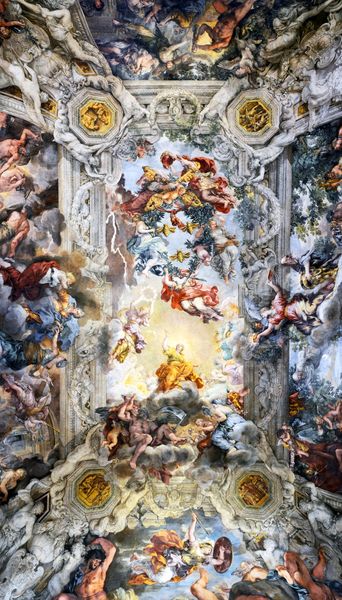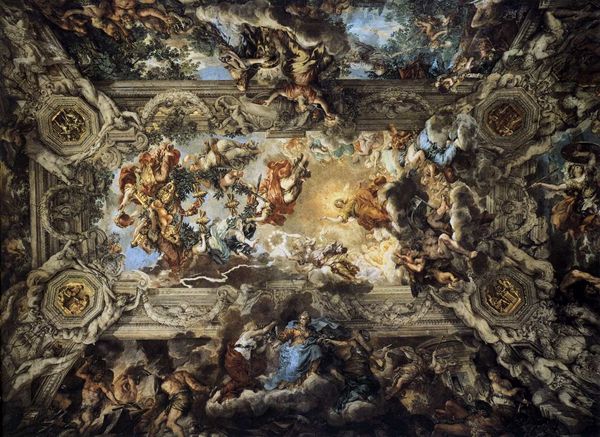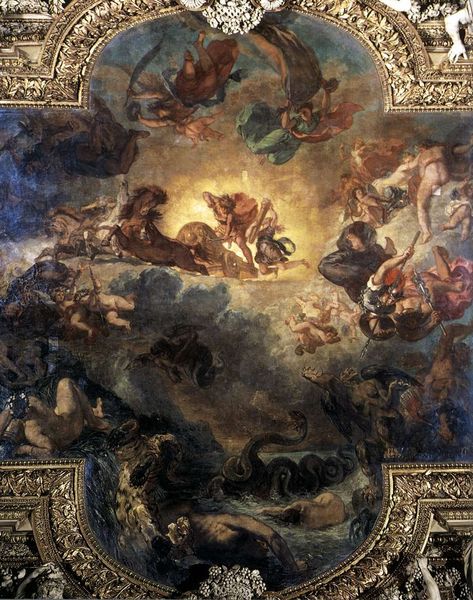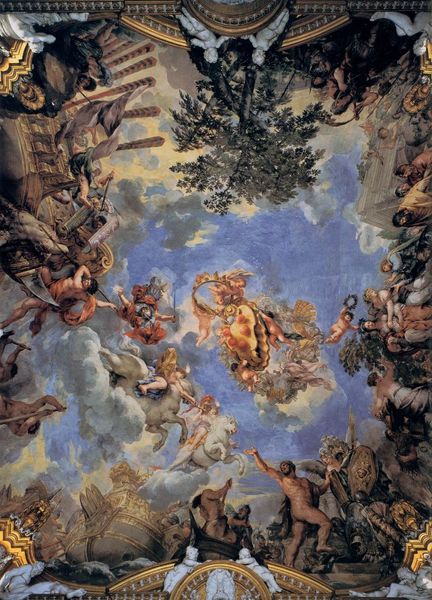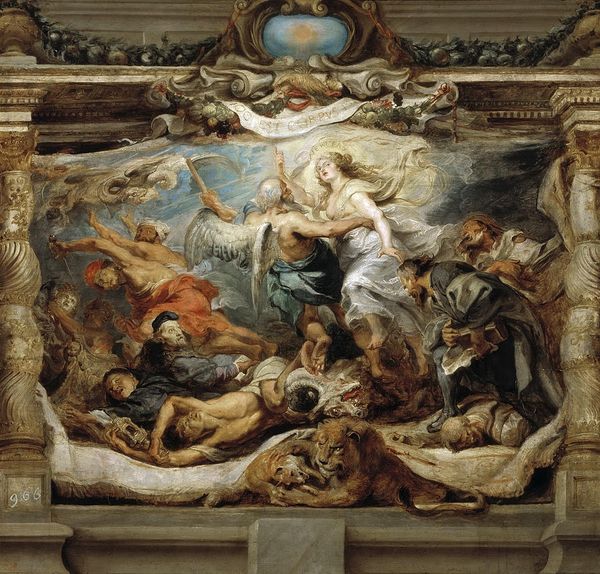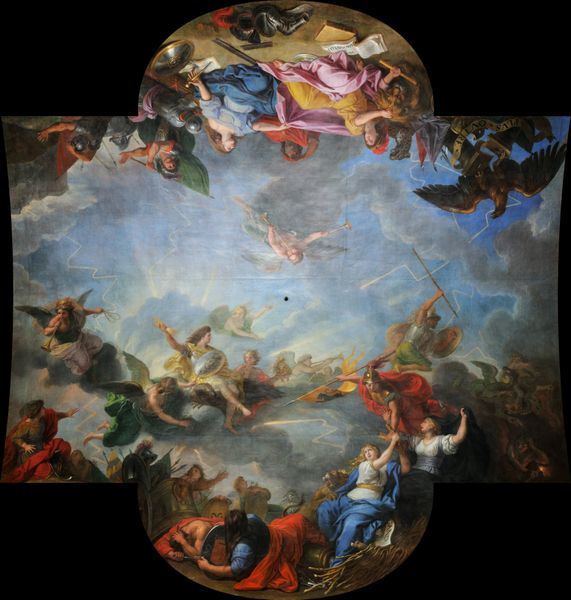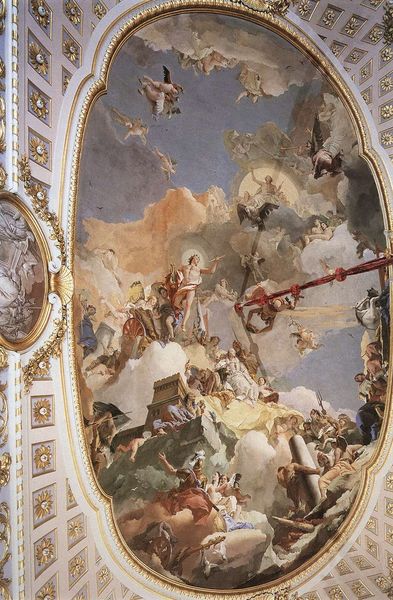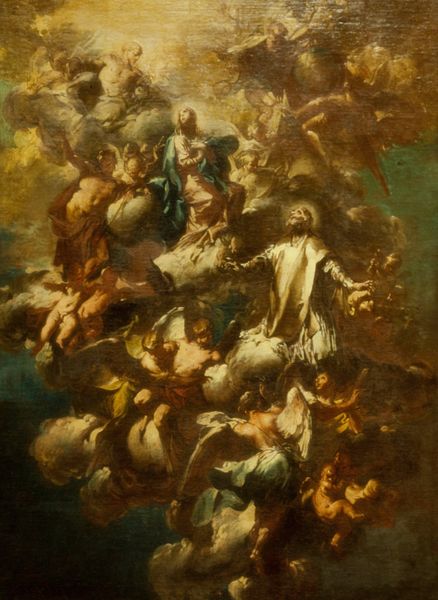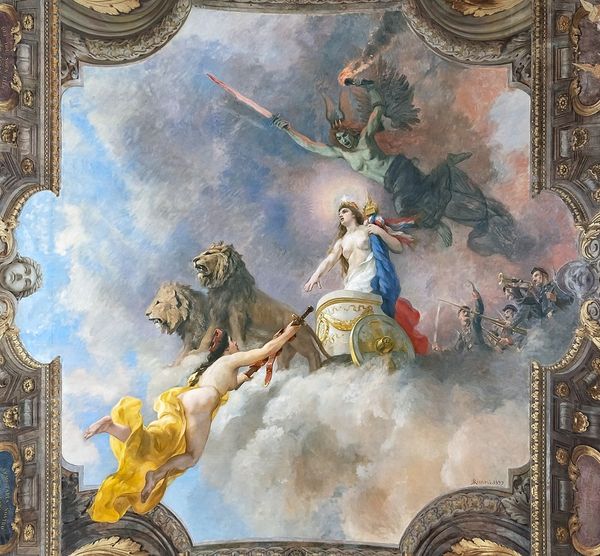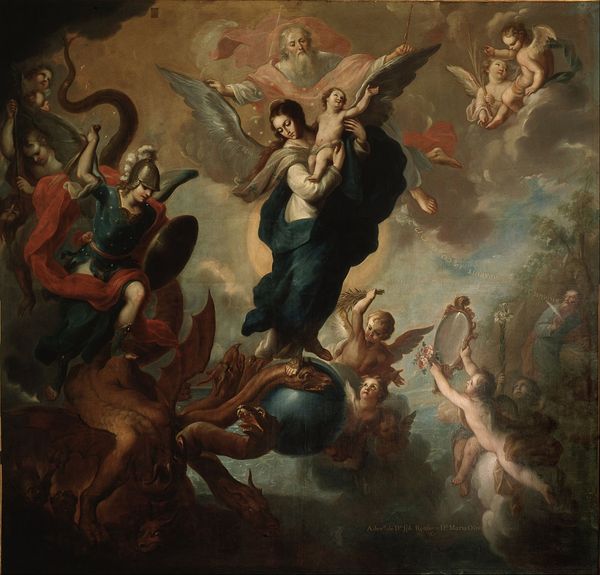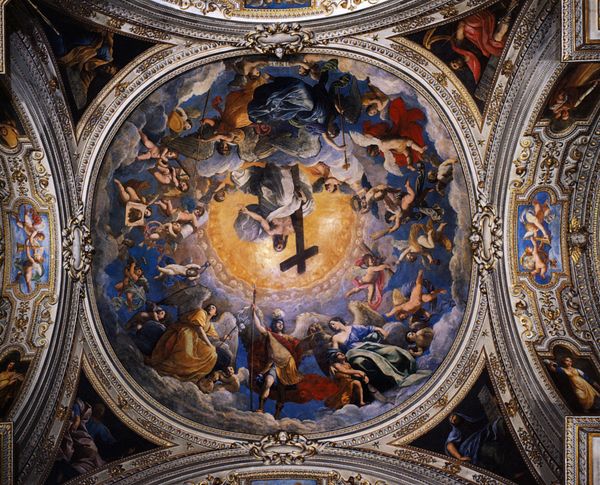
painting, oil-paint, fresco
#
allegory
#
baroque
#
painting
#
oil-paint
#
landscape
#
figuration
#
fresco
#
roman-mythology
#
underpainting
#
paint stroke
#
mythology
#
painting painterly
#
history-painting
Copyright: Public domain
Curator: Standing here, craning our necks… It’s almost dizzying, isn't it? This grand, sweeping vista of gods and heroes ascending to glory in “Apotheosis of Hercules” is the masterpiece that François Lemoyne completed for the ceiling of the Salon d'Hercule at Versailles in 1736. What are your first impressions? Editor: Utter chaos, beautifully rendered chaos. It's a maelstrom of bodies—flesh tones against swirling clouds, robes billowing, everyone jostling for space. What's striking is the sheer effort involved; imagine the scaffolding, the pigments being ground, the countless hours to achieve this illusion of limitless space. Curator: Yes, exactly. The artist quite literally put his back into it. I can feel his exhaustion, poor guy. It's as if he’s trying to catch lightning in a bottle, attempting to paint the unpaintable, those ephemeral flashes of human aspiration. Mythological ascension, perhaps like climbing out of the abyss of the ordinary? Editor: Abyss indeed. The very creation of this work would have been a power statement— the patron’s money, the artist’s skilled labour, all coalescing into this spectacle designed to impress and to awe. These works were made by many, not a single artistic genius as is too often claimed. The question is: how does this depiction of Roman mythology serve the purpose of absolute monarchy? Curator: Oh, it is delicious. Hercules, a demi-god celebrated for his strength, valor, and labours—becomes a perfect mirror to Louis XV himself, a leader ordained by divine right, almost superhuman. What an extravagant myth! Editor: Well, this illusion of grandeur masks something else too, the complex economics that enabled this type of production. Lemoyne directed a whole studio of craftsmen, creating luxury goods to convey and legitimize monarchical authority in Baroque style. We mustn't forget about these contributors. Curator: That’s where our visions diverge, I suppose. I perceive in this grand Baroque drama the very universal longing for recognition. Doesn’t every creative impulse begin with a little hubris and self-regard, wanting your name whispered on eternity’s breeze? This piece breathes with hubris. And Lemoyne seems to capture the eternal human striving. Editor: It’s beautiful, yes, and seductive, I agree, but these impressions depend on all the skilled hands we often overlook, who took pride in their making! Curator: Fair. But next time when you visit Versailles, let us recall his effort and also ponder over what is the meaning of his final dramatic gesture, allegedly ending his own life shortly after completion? What were his working conditions, exactly? I can only imagine...
Comments
No comments
Be the first to comment and join the conversation on the ultimate creative platform.
